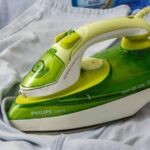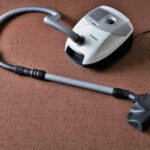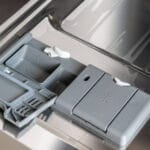One of the common applications of stainless steel is to make things that are mostly found at home. However, the metal can lose its shinny and beautiful finish over time. Accordingly, cleaning and maintenance is a major concern for home owners. Besides dirt, tarnishing and rusting are the other issues that call for attention during the process.
Home Applications for Stainless Steel

The most obvious home use for stainless steel is to make cutlery and cookware. It makes shinny beautify pots, spoons and knifes. Stainless steel utensils are easy to clean and maintain. In addition, they are resistant to scratching and corrosion.
The second common use is to make add-ons such door lock products, outdoor shower and swimming pool add-ons, screws and hinges, and tap accessories. Some of these require a certain degree of maintenance because they are in constant contact with water.
Stainless steel is also used in home appliances. Examples include ovens, sinks, trolleys, biogas cooking stoves and refrigerators.
Lastly, cars feature several parts that are made of stainless steel.
Does Stainless Steel Tarnish or Rust?
Stainless steel is a type of metal that is made from a combination of alloys that are derived from iron. It contains chromium that improves its effectiveness against corrosion. Accordingly, the metal has many home uses because it is easy to clean and maintain.
Ideally, chromium present in stainless steel reacts with oxygen after coming into contact with air. The reaction leads to the formation of chromium oxide, which acts as a protective layer from tarnishing and rusting.
However, there are circumstances under which stainless steel can rust or tarnish.
When the metal is left to accumulate dirt and other unwanted agents over a period of time, the deposits prevent chromium from reacting with oxygen thereby allowing corrosion to take place.
Stainless steel can also tarnish or rust based on the grade of the metal. Essentially, the choice of grade should be determined by the intended use or application.
Other circumstances under which stainless steel can tarnish or rust include constant exposure to salty water, exposure to chemicals such as bleach and interaction with a dissimilar metal.
How to Clean Stainless Steel

Stainless steel requires regular cleaning to remove dirt and maintain the original appearance and feel. Kitchenware such as spoons and cooking pots should be clean every time after use to remove dirt and restore the metal to its original condition.
On the other hand, it is important to clean sinks and fittings such as taps to help reduce the effects of hard water. Stainless steel appliances should also be kept clean.
Cleaning regular dirt
Removing regular dirt from stainless steel does not require extra-ordinary efforts. The only requirement is to use mild detergent and warm water. Combine detergent with water and use a non-abrasive scrubber to clean the surface until all the dirt is removed. Rinse thoroughly with warm water and wipe dry with a clean microfiber cloth or kitchen towel.
This method works effectively on cookware, cutlery, sinks, appliances and other surfaces.
Removing hard water deposits
Unlike regular dirt, mineral deposits from hard water are more difficult to clean. However, the level of difficulty depends on the period they have been left to accumulate. Therefore, mild detergent and water works under ordinary circumstances.
If extra effort is required, combine distilled water and vinegar in the ratio of 1:3. Soak the surface in the solution for at least 30 minutes and loosen the dirt with a non-abrasive scrubber or brush. Repeat the process if need be and follow up by rinsing the surface with warm water.
Removing fingerprints
Stainless steel can develop fingerprints because of regular touching. These are not difficult to clean because they require light soap and water or rubbing alcohol. Other cleaners to try if this does not work include bicarbonate soda and acetone.
However, it is important to wipe the surface dry and polish it with chrome polish.
Removing tarnish and rust from stainless steel
There are several methods that are useful for removing rust tarnish and rust from stainless steel.
The first method entails a combination of bicarbonate soda and lemon juice. Mix equal portions of the two to form a thick paste. Apply the paste on the surface you intend to clean and let it soak for at least 30 minutes. Use a non-abrasive scrubber to clean the dirt. Repeat the process if need be until the surface is completely clean. Rinse with warm water and use a clean microfiber cloth to wipe dry.
The second method is to use baking soda and water. Add baking soda in water to form a paste. Apply the paste on the surface that requires cleaning and let it sit for at least 30 minutes. Use a cloth to clean the surface and rinse with warm water. Use a microfiber cloth to wipe dry.
Sometimes, rust that has formed over a long period might be difficult to remove with regular household cleaning agents. Use oxalic or phosphoric acid in such a case. However, it is important to be extra careful when handling these kind of rust removers. They are dangerous and can cause harm to the skin easily. Oxalic acid also releases dangerous fumes that are harmful to the body when inhaled.
Removing oil and grease
The best method for clearing these kind of stain necessities the use of organic solvents. Examples include alcohol and methylated spirit. The surface should be cleaned with warm water and mild soap after application.
Tips for Maintaining Stainless Steel
- Clean stainless steel regularly to prevent accumulation of deposits that hinder the formation of a protective chromium oxide layer.
- Avoid using steel wool and other abrasive materials to scrub stainless steel because they can cause permanent marks from scratching.
- Do not use cleaning agents that contain chloride. Ideally, this is an element that is common in commercial cleaners but it is not suitable for stainless steel.
- Since hard water is a major culprit for tarnishing stainless steel, consider treating the water in your home.
- Use chrome polish and a cloth to restore shine to your steel surfaces regularly.
- Always rinse your stainless steel surfaces immediately after use.
- Wipe stainless steel on the direction of the polish lines.
- Do not touch stainless steel surfaces with oily or greasy hands.
- Avoid bleaching agents when cleaning stainless steel





